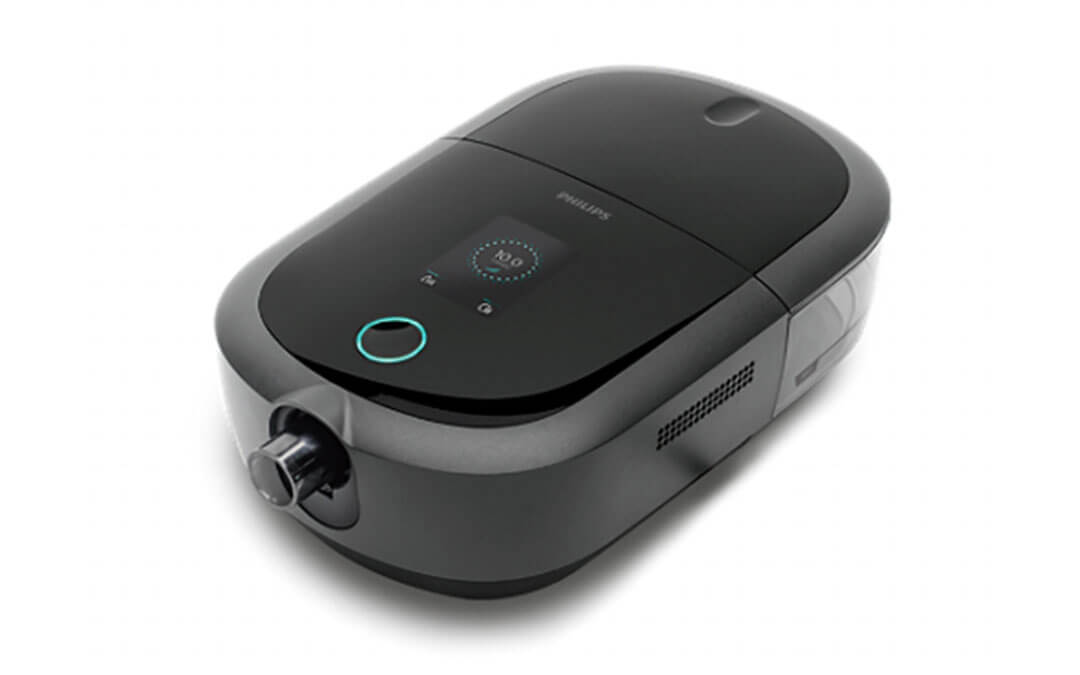News reports about CPAP machines being used as an alternative to ventilators have created a great deal of misinformation about both devices and their uses. This article explains the differences of the two devices and how CPAP machines cannot serve as a substitute when the need for a ventilator is indicated.
In my 27 years as a sleep and lung specialist, this is by far the biggest crisis I have ever experienced. The fear and stress from disease, economic loss, and isolation is new to most Americans and watching or reading the news can be daunting.
A major concern among the media and government leaders is the potential shortage of ventilators, and there has been discussion about using CPAP devices to help support patients with COVID-19 during this shortage. I am questioned about this daily and have even been approached by some individuals wanting a CPAP device proactively in the event one of their family members contracts the virus. This misunderstanding in the general public is concerning, and I hope the following information helps those interested understand the capabilities and roles of both CPAP devices and ventilators during this epidemic.
A CPAP (continuous positive airway pressure) device is a small, super-sophisticated air compressor that has a thin flexible hose connected to a mask one wears over the nose or nose and mouth. The most common CPAP masks used today are tiny and just fit in the nostrils. Because the air supplied is under pressure, the mask includes a small strap around the head to keep it in place and from leaking.
99% of CPAP devices are used to treat obstructive sleep apnea (OSA). OSA is recurrent partial or complete obstructions in the upper airway (throat) during sleep. Partial obstructions are the source of snoring noises. Whether an airway is 50% obstructed (partial) and you hear snoring or 100% obstructed (complete), the long-term result is not good. The positive pressure (above that in the atmosphere) from a CPAP device holds or splints the airway open during sleep, and the patient with OSA can breathe normally and thus, sleep normally during the night (without snoring). OSA is common (37% of adults in US), and CPAP can resolve up to 98% of cases of OSA. I will address the possible use of CPAP in the treatment of COVID-19 after discussing ventilators.
Related: Why Choose CPAP?
Physicians look at the process of breathing or respiration as two parts:
- Ventilation, the mechanical process of moving air in and out of the lungs, which involves the diaphragm and other muscles of breathing.
- Oxygenation, which is the process of transferring oxygen from the lung into the blood. So again, these two processes: moving air, which is 21% oxygen, in and out of the lung (ventilation) and moving oxygen from the tiny air sacs in the lung into the blood (oxygenation).
A ventilator, technically a mechanical ventilator, is a machine that moves air in and out of the lungs and does the work of breathing that the diaphragm and other muscles normally perform. A standard CPAP machine provides one constant pressure and cannot move air in and out, thus it cannot ventilate. A ventilator provides air at variable pressures to move air in and out of the lungs according to the settings and patient’s needs. Ventilators are for patients when the work of breathing has become so much that the patient’s muscles can no longer perform the work. A ventilator then can perform the work and rest the muscles used to ventilate.
So, if a CPAP cannot ventilate, can a CPAP help out during this epidemic? Yes, in a transitional role. Remember the second part of respiration: oxygenation, the transferring of oxygen from the lung into the blood. CPAP can help patients with oxygenation who do not yet require ventilation. CPAP or positive pressure can help oxygen in the lung transfer into the blood. Obviously, ventilators supply positive pressure and improve oxygenation as well. But supplemental oxygen is the first line of treatment to improve oxygen transfer from the lungs to the blood, not CPAP or a ventilator.
Think about it as a progression. The novel coronavirus (COVID-19) has a propensity for the lungs. Infection or inflammation in the tiny air sacs of the lung is called pneumonia. As the virus infects the air sacs in the lungs (called alveoli), the immune system responds to the virus and causes inflammation in the air sacs. It is unfortunate that it is not the virus as much as the body’s reaction to the virus that causes so much of the problem. Inflammation causes fluid to leak into the air sacs and impairs the air sacs ability to transfer oxygen into the blood. Initially, this decreased oxygen transfer into the blood causes shortness of breath. As the inflammation increases, more fluid leaks into the air sacs and more air sacs become involved in the process.
At some point, the patient is no longer able to transfer enough oxygen into the blood from the air (21% oxygen), and supplemental oxygen is given. By increasing the percent of oxygen provided to the patient, we can continue to support the patient, hoping the inflammation in the lungs will soon subside and we can wean the oxygen off as the lungs improve.
Unfortunately, some patients will have progressive disease where even high percentages of oxygen cannot maintain adequate transfer of oxygen into the blood. This is where a CPAP device can help temporarily. Remember CPAP supplies a constant pressure of air to breath under, and when oxygen is supplied with pressure it increases the transfer of oxygen into the blood. There are several reasons for this I will not go into. So, the next step in treatment after high levels of oxygen alone is oxygen supplied with pressure which could come from a CPAP device.
The inflammatory reaction and fluid in the air sacs not only decrease oxygenation but make ventilation more difficult. The lungs become stiffer and less compliant, making it difficult to breathe. The muscles that move air in and out of the lung (ventilation) have to work harder. If the inflammation increases further, the patient may need assistance breathing (ventilation) to prevent fatigue of their breathing muscles. By this point the patient likely meets the criteria of adult respiratory distress syndrome (ARDS) which suggests other organ systems are likely involved, and the prognosis has significantly worsened.
A more advanced CPAP device that provides two pressures, a bi-level PAP, may be set to help ease the work of breathing and delay using a ventilator. There are even two more advanced CPAP-type devices that provide higher pressure and further support to avoid a ventilator. The hope is these advanced CPAP-type devices would manage some patients without progressing to a ventilator, these would only be useful in addition to high flows of oxygen.
While we are all thankful for any help CPAP-type devices can offer during this world-wide crisis, we need to be aware of four main limitations with their use:
- Limited pressure range: Even the most advanced CPAP-type devices can only generate 30cm H2O of pressure which may not be enough to ventilate a patient with ARDS. Plus, these devices ventilate using face masks which have trouble keeping a seal at higher pressures. These systems are very difficult to tolerate short-term, much less long-term. For comparison sake, the average CPAP pressure to treat OSA is < 10cm H2O.
- Limited control of settings: ARDS patients are usually difficult to ventilate requiring settings not available on CPAP-type device
- No alarms: Ventilators have alarms that can signal a problem. The advanced CPAP-type devices give no such warnings, and patients require closer monitoring.
- Exposure risk: The exhalation port of CPAP devices just blows air out into the room. These patients have COVID-19 infection, and they could be aerosolizing the virus into the room. Most ventilator patients have a tube inserted down the throat into the trachea through which they breathe in a closed system. The exhaled air passes through a filter system that should collect any virus or pathogen. Some emergency departments are progressing straight on to intubation and mechanical ventilation and avoiding intermediate supportive use of a CPAP-type device because of the risk of exposure to others.
There is also information online about converting CPAP-type devices to a ventilator. In fact, there was a post yesterday from Auburn University. These conversion designs are quite clever and would limit exposure with exhalation filters, but the inspiratory pressures generated by CPAP devices are still mostly inadequate to ventilate patients with ARDs. A standard CPAP device only produces a maximum of 20cm H2O. The goal in ventilating many patients in ARDS is to minimize the mean airway pressure but managing ARDS patients at lower pressures requires complicated manipulations of flow rates and flow timing that these devices lack and incredible experience in the ICU physician. Again, these CPAP conversions would not have alarms.
I really admire the ingenuity of the designers and their response to this crisis. I am sure there will be some patients these CPAP-conversions can assist. I think just a filtering apparatus on the exhalation port to reduce the exposure risk of CPAP-type devices would be most helpful. We will all have to do our best with what we have in each situation. If we all do our part to flatten the curve appropriately, we may have enough resources to manage cases as they present slowly over time.
And finally, I see a focus right now on the shortage of ventilators, like a ventilator is all patients will need. A ventilator in the management of ARDS is crucial, but there is so much more to the care of patients on ventilators. For example, patients in ARDS require heavy sedation, similar to anesthesia, to maintain them on a ventilator. A few years back there was a national shortage of the most common sedative we use. There may be other ICU needs we run short on and not just ventilators. These patients require nutrition through a tube and are on multiple medications trying to lower the risk of complications. They must be monitored hourly, which requires more risk to staff.
If managing a ventilator in common circumstances is like algebra, managing a ventilator in ARDS is like calculus. The ventilator is sometimes managed counterintuitively. These patients need very experienced ICU nurses and ICU physicians, and there was already a national shortage of both before the epidemic began. These patients also need gastroenterologists, nephrologists, cardiologists, infectious disease experts, and other specialists to provide optimal care. I fear there will be exhaustion of the healthcare team before exhaustion of the ventilators.
This unprecedented crisis is precipitating many ethical decisions, and I only have the highest admiration for the brave healthcare workers in our communities making them. I was only trying to explain the difference in a CPAP device and a ventilator and clear up some confusion. Having oxygen at home proactively during this crisis would likely be temporary and having a CPAP device at home would likely be futile. Unless you have OSA, and in that case, CPAP could be life changing.
William H. Noah, MD is Medical Director of the Sleep Centers of Middle Tennessee and Chairperson of the Middle Tennessee State University Sleep Research Consortium.

